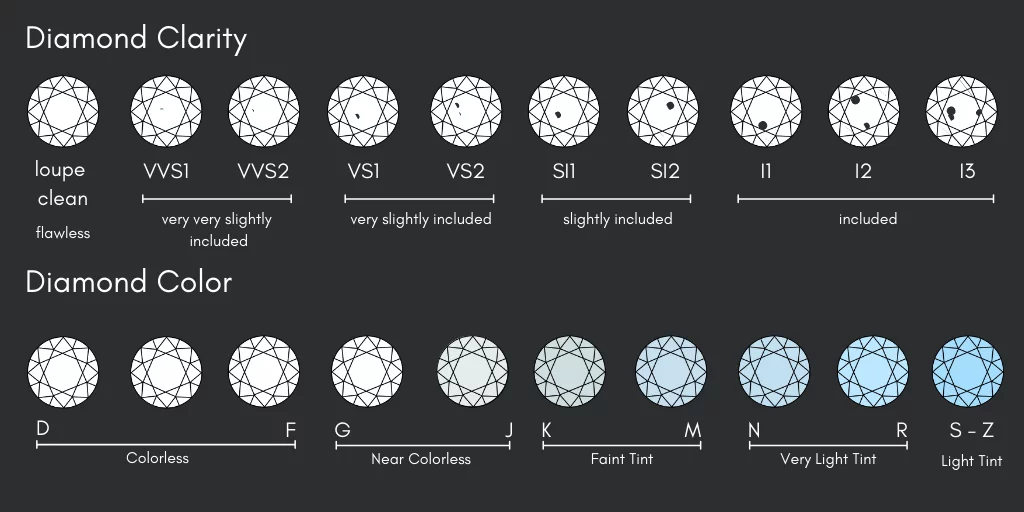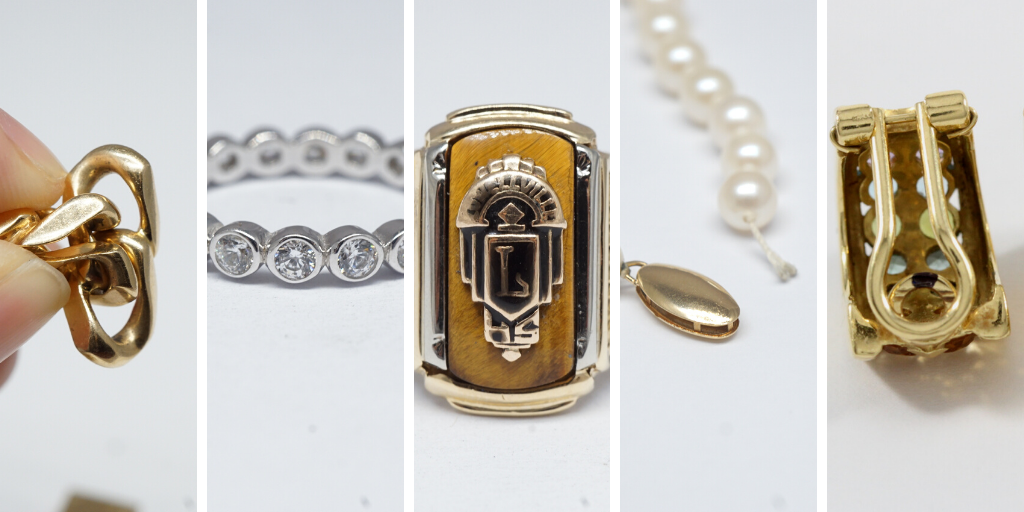How to Create Your Own Custom Made Necklace
Written by Annabelle
June 25, 2019

Whether it's for a special occasion, an anniversary present, or on a whim, a custom made necklace is always a wonderful idea! Beautiful, personalized pieces come to life and become family heirlooms with interesting stories. But how do you get started on creating your own necklace? Read on to learn more about the custom necklace design process.
The Custom Made Necklace Creation Process
- Come up with a design:
- Without a doubt, this is the best part of the process aside from receiving the final product. The possibilities are endless; will you choose a well-known jewelry design, or come up with something completely new and unique to you? There are a few questions you should start asking yourself:

These are a few options you can consider when creating your necklace.
- What do I want to make? Do you want a long statement necklace, a choker, or a simple pendant with no chain? Think about the style of the necklace and how you'd like to wear it; different styles have different visual effects. Also take your lifestyle into consideration- are you going to be wearing this piece 24/7, or will it be saved for special events? If you're working in a field that requires a lot of physical activity, it may not be the best idea to design a custom pearl necklace that is fragile and prone to catching on things.
- What chain type do I want? If you're going for a chain necklace and its variations such as a Diamonds-by-the-Yard design, you should consider what kind of chain you want on your necklace. There are many types of chains that have visually appealing patterns and differing levels of maintenance. For instance, a herringbone necklace is beautiful and seamless, but requires a lot of care because once it snags it can't be repaired.
- What metal or metal types do I like? One of the most important things to do when custom creating a piece is to determine what type of metal you want in your design. This decision has a significant effect on the price of your custom piece- sterling silver being the cheapest metal, with platinum at the top for the most expensive material you can possibly choose. If you're feeling adventurous, you can even use more than one type of metal in your design. Some famous designers such as David Yurman enjoy creating two-tone pieces that use both sterling silver and yellow gold.
- What stones do I want? If your design has stones in it, it's fun to figure out what you should put in. Many of our customers select their favorite gem, or the birthstones of their loved ones to add a touch of sentimentality. Consider the quality and cut that you prefer as well; for our diamond lovers, we always encourage them to think about color and clarity.

A chart detailing the clarity and color grading system for diamonds
- What additional touches should I include? Jewelry is a form of art; in custom creation, you have a lot of tools at your disposal. Aside from metal and stones, think about the different things you can do to your piece. Enameling, oxidation, plating, and finishing are all different options to get your custom made necklace looking like the piece of your dreams.
- Without a doubt, this is the best part of the process aside from receiving the final product. The possibilities are endless; will you choose a well-known jewelry design, or come up with something completely new and unique to you? There are a few questions you should start asking yourself:
- Start the CAD Creation
- Once you've figured out what you want and communicated your ideas to a designer, the first part of the manufacturing process begins! The designer will take your idea and any visual references you might have to create a CAD (Computer Aided Design) file. This is a 3D file that is sent to a 3D printer, which will create a wax model. The wax model is then used in production.

The first CAD of a custom made pendant, before revisions.
- Once you've figured out what you want and communicated your ideas to a designer, the first part of the manufacturing process begins! The designer will take your idea and any visual references you might have to create a CAD (Computer Aided Design) file. This is a 3D file that is sent to a 3D printer, which will create a wax model. The wax model is then used in production.
- Move Into Casting
- After you approve the CAD, the designer communicates this to the casting and manufacturing team. They proceed to print the 3D wax model from the 3D printer, and use it to create a mold that the molten metal is poured into. A lot of labor goes into the casting to ensure that the metal is as structurally sound as possible.

A wax model for a custom ring design.
- After you approve the CAD, the designer communicates this to the casting and manufacturing team. They proceed to print the 3D wax model from the 3D printer, and use it to create a mold that the molten metal is poured into. A lot of labor goes into the casting to ensure that the metal is as structurally sound as possible.
- Set and Polish
- Once the item's cast, the metal is rough and requires polishing. A polisher takes the piece and buffs out the surface with a wheel made from steel wool. Stones are also set into the design at this stage, and all settings are tested to make sure that the stones are secure and tight. If the item needs a particular kind of finish, such as matte or hammered, the jewelers will also add that visual effect via the polishing wheel or their toolkit.
- Apply Plating, Enameling, and Oxidation
- Any coloration effects have to be done after polishing. Since the colors will be applied on top of the piece, the jewelers have to prepare the surface of the necklace or pendant beforehand.
- Plating: If the whole item needs to be plated, it is sent to a plating tank where it is immersed in a solution of metal salts. An electrical current runs through the tank, fusing gold particles to the surface of the necklace. For small details that need to be plated, the jeweler will use a gold plating pen to color the specific locations instead of putting in the gold plating tank.
- Enameling: This is a process that involves the application of colored compounds to the surface of the metal in order to create a “painted” look. After it has been applied to the surface, the enamel is baked to harden to the top of the pendant.
- Oxidation: A chemical application that is only available for sterling silver. The oxidation chemicals are applied to the specific areas or the entire piece to give it a weathered, darkened look that helps to make bright gems “pop.”
- Any coloration effects have to be done after polishing. Since the colors will be applied on top of the piece, the jewelers have to prepare the surface of the necklace or pendant beforehand.
- Admire the Finished Product
- Once it's done, there's nothing else to do but to wear it and enjoy the fruit of your efforts! To follow through with the custom creation process, the jeweler will explain to you any necessary details for care and maintenance, especially if your necklace has some soft stones or special chains. Yearly cleaning and check-up will help you keep your new custom made necklace in pristine condition.

A custom-made pendant after casting and finishing.
- Once it's done, there's nothing else to do but to wear it and enjoy the fruit of your efforts! To follow through with the custom creation process, the jeweler will explain to you any necessary details for care and maintenance, especially if your necklace has some soft stones or special chains. Yearly cleaning and check-up will help you keep your new custom made necklace in pristine condition.
Now you're ready to get started on making your very own necklace! If you're interested in this service, shoot us a quick message using the form below.


